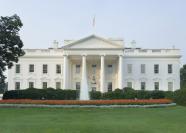Delaying Ozone Standards Politically Inspired
Financial, Technical Reasons Cited

Delaying the revised ground-level pollution standards is a) political b) technical or c) financial? While the administration flatly denies it, the answer is that the decision is politically motivated so as to win over those independent voters now sitting on the fence.
Regardless, there are valid financial and technical reasons to stall the implementation of new rules affecting ozone levels, which is the primary ingredient of smog that causes lung-related illnesses. Job growth remains flat and unemployment stands at 9.1 percent. President Obama can’t ask businesses to hire workers while he is also demanding that they spend more on regulations -- even though those same enterprises would have years to comply.
“I expected that EPA would quietly withdraw the ozone rule without any fanfare,” says Jeff Holmstead, former head of EPA’s pollution office. “The political folks at the White House must believe that the president needs to show that he is concerned about too much regulation from EPA.”
According to the White House, the new rules would have cost between $19 billion and $90 billion by 2020, depending on which new standards would have ultimately been chosen. However, environmental groups contend that the health benefits would have amounted to $37 billion a year and moreover, they say that such rules would led to new job creation in the pollution control area.
EPA has already put off four times since 2010 the writing of final ozone standards. Given the current economic reality, the president has said he will revisit the rules in 2013-- something that has prompted the environmental groups and others to say that they will take legal action. Already, the D.C. Circuit Court of Appeals has overturned those rules written in 2008.
EPA’s proposals, which would apply to state and local governments, would strengthen the Bush-era ozone standard enacted in 2008. It has been .075 parts per million but would change to .060 to .070 parts per million. At the weaker standard, EPA says that the benefits outweigh the costs. However, the Business Roundtable says that the most aggressive standards are not technically feasible and would place 85 percent of counties out-of-compliance.
But, “The costs wouldn’t have kicked in for several years, long after the current economic downturn,” writes Frances Beinecke, executive director of the National Resource Defense Council.
Job Creation
Beinecke goes on to say that utilities can afford to upgrade their plants and that many of them are doing so. In 2010, for example, the top 10 power companies had a combined $28.4 billion in profits and $7.5 billion in cash balances. Embracing innovative pollution controls is pro-consumer and improves the lives of the people that they serve, she adds.
The defense council is not alone. In fact, the Institute of Clean Air Companies is arguing that a separate EPA rule also opposed by many businesses -- CAIR Phase 1 -- increased jobs in the pollution control field by 1.7 million from 1999 to 2008.
Meantime, seven utility executives representing PG&E, Exelon and Constellation penned a letter to the Wall Street Journal saying that EPA’s rules are practical and that they have already begun investing in the technologies to comply. Observers will note that those utilities rely on nuclear or natural gas, not coal. But those large utilities are citing what they say are the realities.
“For over a decade, companies have recognized that the industry would need to install controls to comply with the act's air toxicity requirements, and the technology exists to cost effectively control such emissions, including mercury and acid gases,” write the chief executives. “Contrary to the claims that the EPA's agenda will have negative economic consequences, our companies' experience complying with air quality regulations demonstrates that regulations can yield important economic benefits, including job creation, while maintaining reliability.”
So, if an appellate court has said that EPA is required to come up with new rules and some in the utility industry maintain that compliance is possible and even beneficial, what then is stopping the changes? Politics.
The American people are focused exclusively on job creation. Curbing pollution or carbon levels can wait. Many enterprises are understandably concerned about new financial and regulatory pressures and giving them some additional breathing room can only help the president’s re-election bid.
After all, Obama can already boasts that his administration is working hard to reduce other pollutants such as mercury, sulfur and nitrogen oxide. And, generally, the Republican presidential hopefuls are unacceptable to the Democratic base. So, the tack taken by the president is a net political plus.
Until the economy is back on track, the president’s strategy of delaying the regulations is necessary. In two years, however, the effort to rewrite the ozone rules should resume, despite what will likely be a similar set of corporate objections.
EnergyBiz Insider has been named Honorable Mention for Best Online Column by Media Industry News, MIN. Ken Silverstein has also been named one of the Top Economics Journalists by Wall Street Economists.
Follow Ken on www.twitter.com/ken_silverstein
energybizinsider@energycentral.com.
Copyright © 1996-2011 by CyberTech, Inc. All rights reserved.
To subscribe or visit go to: http://www.energycentral.com